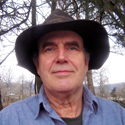Trail Talk – November 2016
Aldo Leopold, in Sand County Almanac, tells of exploring once-developed areas that have been reclaimed by wilderness. And surprisingly, it’s not all that long after humans have left the area. Here, around Jacksonville, we find wild areas of a similar nature. Where our predecessors had mining ditches, houses and barns, roads, stamp-mills, mine tunnels and railroads, we find forest and meadow reclaiming the hills and canyons. A hike in the Woodlands or Forest Park will take you into areas that once saw a bustling commerce in resource extraction. And like Aldo Leopold, we are left to marvel at Nature’s resiliency at returning undeveloped land to its natural state.
We are wise to watch where our steps take us, and we are wise to understand how our landscape evolves. As homo sapiens, (humans who are aware) we are able to contemplate how our world changes over time. We can anticipate summer’s heat cooling into autumn’s frosts, and autumn’s frosts becoming winter’s icy blasts. What a great time to get out-of-doors to enjoy the change! For it is at the change that we find the richness of Nature. Trails that were dusty and dry but a week ago are now transformed by fallen leaves, and soon that blessed rain comes to massage the senses with the rich, sweet smells and brilliant colors of an autumn forest.
The gray, foggy days invade the valleys, and it’s time to escape to the ridges and the viewpoints. Here, one gazes far out across the sea of low clouds to the mountains far beyond, often bedazzled by winter’s low-in-the-sky sun. Here the shadows stretch ‘taller than your soul’, and the contrast of light and dark paint the horizon in a palette of color unremembered during summer’s harsh glare. It’s hiking time!
As you walk along on the thread of trail meandering through our woodland parks, take time to think how that trail came to be there. Often, the path you are walking was once a game trail. First Nations’ storytellers teach us that in the beginning, Coyote showed the other animals where to walk. So if the trail seems contrary to common sense, have a good chuckle, and know that Trickster Coyote is having fun at your expense.
Soon, the trail-builders came looking for a route to access a feature or corner of the park. Maybe an old mining ditch or a wagon or logging road was available to travel along. Other times, trail had to be carved out of a mountain-side or creek bottom. But in keeping with the wild nature of a Forest Park, the trail tread was kept to a minimum so as not to disturb the wild areas it would travel through. Care was taken to avoid uprooting plants, or unnecessarily cutting trees, and natural features were used as often as possible.
These trails are not for fast travel. By their nature, they invite slow progress and contemplation. Celebrate the uniqueness of each. Find those hidden places where the wild things are. Exercise your heart and soul as well as your legs and lungs.
 Trail Talk is a monthly column by Clayton Gillette about hiking the Jacksonville Woodlands trail system. For more information, please visit the Jacksonville Woodlands Association website at
Trail Talk is a monthly column by Clayton Gillette about hiking the Jacksonville Woodlands trail system. For more information, please visit the Jacksonville Woodlands Association website at